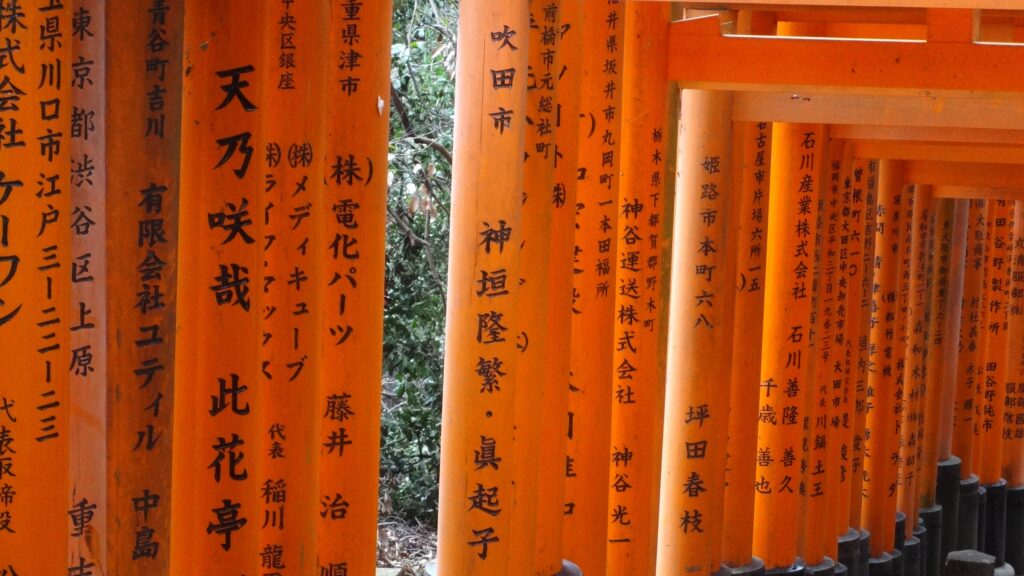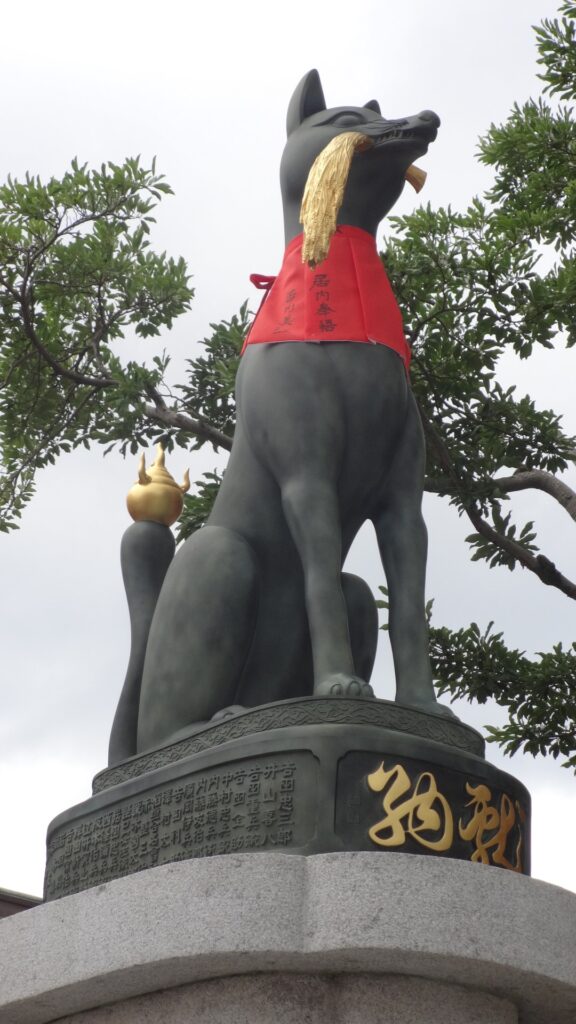
DAY 8
(Reading time: 4 minutes)
The morning was somewhat chilly and rainy. We usually don’t mind a little rain, but this time we felt a bit more inclined to stay in the cozy realm of our blankets, so we let it linger a bit longer.
Only after a little bit more sleeping, we set out to visit the vermilion path of thousands of gates at Fushimi Inari.

Fushimi Inari is the most significant Japanese Shinto shrine dedicated to the deity Inari, primarily known as the patron of rice but also of tea and more generally agriculture, fertility and prosperity. It can’t be said if Inari is of male or female gender; it is depicted in both ways, sometimes even ambiguously androgynous. It appears as an individual or in groups of three to five.
The shrine is particularly famous for its variously sized red torii gates, of which there are around 10,000. They lead along several paths through the forest towards Mount Inari (233m).
The lower gates shine brightly red into the distance…
…while the colors of the gates closer to the summit of the mountain are faded.
The reason is age. Every year, new gates are added in Fushimi Inari, purchased and donated by companies or wealthy merchants with the belief that this act will favor them with the deity. On one side of the gates, you can notice a Japanese inscription – indicating the year of donation and the name of the donor.

The path lined with gates ascending the mountain is beautiful but quite challenging, and only a small percentage of people make it all the way to the summit of Inari. Most turn back at the Yotsutsuji Intersection.

Along the way, you’ll find many stalls with various refreshments; we were most tempted by the idea of tasting matcha-flavored ice cream.

In addition to thousands of gates, Fushimi Inari also houses thousands of fox statues. Gods often choose animals as their messengers, guides or protectors: sika deer, lion-like komainu, white snakes, dragons, monkeys, etc. The messengers of the deity Inari are foxes (kitsune), perceived as intelligent and cunning beings (same perception as in our country) with paranormal abilities (not the same in our country). They can also serve as guides of souls in the afterlife.


No sacred fox can (apparently) resist its favorite food – tofu, so this food is ideal as an offering to the gods.
We were more in the mood for meat, so we had skewered pork and takoyaki (balls of flour batter filled with ground/cut octopus) downstairs at the entrance.
However, the main meal of the day came later at the running sushi. We tried this style of Japanese dining several times in Japan, and we really enjoyed it. You sit around a “circular” table, in the middle of which several chefs make sushi right in front of you. You can talk to them and ask for sushi of your choice or simply pick from what is currently passing by on the conveyor belt. It’s not just sushi. Rice, tempura, eggs, caviar, sweet desserts circulate on small plates… The plates have different colors according to the price, and upon leaving, you pay for their total. All customers also have unlimited access to water, tea, soy sauce and pickled ginger.

I’d rather keep silent about the height of our stack of plates when leaving…
-endy-
DONKEY’S SPECIAL:
-mj-